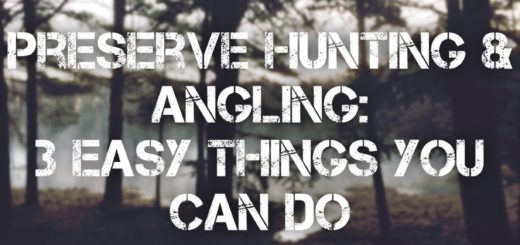What makes a successful hunting scout?
I was disappointed yesterday.
Liam and i went scouting for turkeys in the Simcoe County Forests and saw nary a sign of our quarry. Now, we only had a couple of hours at our disposal, so we only had the chance to check out a few tracts – but they were large, bordered a bunch of agriculture, and had plenty of water and roosting opportunities. Given the softness of the ground (the snow is melting now) I was sure I’d see at least one of the telltale trident prints of a turkey. Nothing. No scat, no feathers – not a sign.
Driving home I felt like I had failed, but then I realized something important: I knew more than I did before. Way more.
It is easy as a beginner hunter to get disappointed when scouting. In the rest of our lives, we become used to instant gratification and instant information. We wish we could simply google “are there turkeys in this tract of forest?” Local hunting message boards may surprise you with nuggets of great intel to answer that question but, obviously, scouting isn’t that simple. Still, even if you don’t find sign of your quarry you should always be alert to (and file away in your brain) any new information you pick up along the way.
For example, I now am pretty confident that there are at least two different deer habitually moving through, and possibly bedding in, one of the tracts we looked at, given the scat and sign we found. We also discovered a refuge area at the bottom of a very steep valley cut by a river and concealed by fragrant eastern cedars. This could be a good place to hunt pressured animals. We didn’t see any rabbits, but we found habitat that they would seek. We found coyote scat and now know they are moving through one tract along a snowmobile trail.
Importantly, we didn’t confirm that there aren’t turkeys in the area, only that they aren’t moving through the areas we considered. Or, at least, not in significant numbers. It would take a dawn tour listening for gobbles to confirm. I haven’t ruled it out – there is food, water and shelter that turkeys would like in the areas we checked out. I also suspect one of the two locations we checked is more likely to hold turkeys than the other.
Armed with that info, we have more and better options than we did before. We can revisit the more promising site at dawn to listen to gobbles. We can decide to write those locations off entirely and scout other tracts. We might even hunt deer in the locations where we found plenty of sign, subject to some return visits and more comprehensive scouting. When the water recedes in the refuge valley river, we can return and check the banks for tracks (everybody has to drink).
Bottom line – scouting trips are always a success if you keep your eyes open and don’t get fixated only on sign of the animal you’re after. Pay attention to the bigger picture, make notes when you get home so you don’t forget, adjust, and get back out into the field! Worst case, you got to spend some time outside. Never a bad thing.

